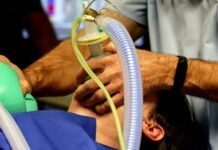Just like the porridge, chairs, and beds tested by Goldilocks, there’s the “just right” factor for sleep, too. According to an article from the Division of Sleep Medicine at Harvard Medical School published at the Healthy Sleep Website, a combined effort of the WGBH Educational Foundation and the Harvard Medical School Division of Sleep Medicine, most adults need about 8 hours of sleep. They noted, however, that’s an average, and some require substantially more or less. In fact, according to the site, it can vary from as much as nine hours to as little as six. Great minds differ in the amount of sleep they need. Albert Einstein slept 10 hours a day, plus had naps, and Nikola Tesla slept only two hours a night with a few naps throughout the day.
What various experiments have found, is that each person has his or her own “normal,” based on that person’s natural circadian rhythm and other factors. It’s when that normal varies, such as more sleep than normal or the inability to sleep, it might indicate a health problem or if caused by outside influences, create health issues. According to NIH – The National Institute for Health – lack of sleep can increase the potential for some diseases and conditions, such as stroke, heart disease, high blood pressure and diabetes. Studies also show that lack of sleep can make you obese, stunt growth, compromise the immune system and even affect brain functioning.

Learning the importance of sleep and why people sleep more or less can alert us to potential physical problems, giving time to take action before they occur. While most experiments are only gathering data and following health conditions of thousands of subjects, others are a bit more bizarre. In fact, some are plain awful. Most of the awful or cruel ones were conducted more than a century ago, although there are still a few bizarre ones going on today. Here’s a few of those that take a walk on the weird side, but are far more interesting than just collecting data on the number of hours slept.
When Even Scotch Tape Won’t Work
An early experiment by the “Founding Father of Sleep Research,” Professor Ian Oswald, when he was a professor in the field of Psychiatry at Edinburgh University, attempted to find the effects of lack of sleep. It found something entirely different instead. The professor did everything possible to keep the three young subjects awake. He attached electrodes to the left leg of each subject and administered rhythmic shocks, taped their eyelids open, had flashing lights in front of their faces and even played loud blues music. It was to no avail. Within just eight to twelve minutes, each subject went to slumber land and even had slowed heart rates, constricted pupils and had a brainwave that occurs when people sleep. It seems the brain adjusted and reacted to the over stimulation by shutting down rather than being stimulated. Maybe they just chilled to the blues music?
The Nail Fairy Came to Visit
Do you repeat your laundry list of chores for the next day repeatedly before you fall asleep? It may work to help you get them done, then again, it may not work. In 1942, a scientist named Lawrence Leshan was working in some different areas, including behavior modification during sleep. He took a group of children to a camp in upstate New York to see if messages given during sleep could affect their daytime behavior.
Once the children fell asleep, he turned on a phonograph that repeated the message, “My nails taste bitter,” fifty times and did that six times a night. Since Murphy’s Law worked even before it was named Murphy’s Law, the phonograph broke. He then went into the room and whispered the message to each child, which is a little creepy by anyone’s standards.
Even though the experiment tilts toward the weird side, by the end of summer, he managed to get 40 percent of the children to quit biting their nails. An attempt to replicate the results failed completely when it was tried several years later. No one quit. It’s interesting to note that Leshan did studies on meditation, psychic powers and even wrote some science fiction stories under the name Edward Grendon.
Of Puppies and Men
Science isn’t always pretty and way back when it was even more gruesome. This experiment using cute fluffy puppies was noted in the July 1997 issue of Sleep in an article called The Pioneering Experimental Studies on Sleep Deprivation. It was conducted by Marie de Manacéine in 1894, long before PETA – People for the Ethical Treatment of Animals or the RSPCA – Royal Society for the Prevention of Cruelty to Animals. She was attempting to find if there were physical effects from lack of sleep and used puppies to prove her hypothesis.
She kept the puppies awake and active, even though they would usually sleep a lot at that age. They all died within four to six days of the continuous walking and handling. She found they all had severe brain lesions too. Her conclusion, sleeping was more important than eating, especially for cuddly little pups.
When a University of Iowa study used three young men as their subjects, to replicate the study in humans, it took just 48 hours to see the results. They were punch drunk from lack of sleep. The lack of sleep caused them to hallucinate, too. They saw giant bugs, goo on the floor and other things in this state. This was completed in 1895, long before mind bending drugs were popular in college. It’s a wonder that ever happened when staying awake provided the same results and you could hone up for your next exam at the same time.
Get Sleep and Stay Healthy
If you fall subject to colds when you’re at your busiest and don’t even have time to sleep, there’s a reason or two for that occurring.
It took a team of scientists to prove what your mother has been telling you for years. You need to get sleep to stay healthier. Pranther, Jaicki-Deverts, Hall and Cohen combined efforts of UC San Francisco, University of Pittsburgh Medical Center and Carnegie Mellon University to conduct the study published in the September 2015 issue of Sleep, called, Behaviorally Assessed Sleep and Susceptibility to the Common Cold.
The study tracked 163 subjects and their sleep habits, then exposed all the people to a cold virus. Individuals who slept longer than six hours were 4.2 to 4.5 times less likely to catch a cold than their counterparts who had less sleep.
A Chilling Study on Sleep
Okay, if you love geology, maybe your idea of a great time would be to spend it in an icy cold cave found beneath a glacier, but most people would enjoy the challenge. Michel Siffre, a French geologist, seemed to like the idea, so in 1962 he did just that. His experiment was meant to determine whether the body’s lack of sensory input and isolation could affect the internal clock. There was no way to judge the passing of time since he had no watch and no communication from the outside world. He did call the research assistants to let them know when he ate, went to sleep or got up.
His body’s master clock, known as its circadian rhythm, slowed. He had a hard time judging a second and it took him five minutes to count to 120 attempting to count a digit each second. He also ended the study almost a month after he had thought it ended. Instead of it being the 20th August, it was the 14th September, spending nearly twice as long in the cave as he thought he had. When the experiment was tried in a warmer cave, at first, the results were the same, but somehow changed after the first month. His 24.5 hour day varied significantly. It ranged from a high of 52 hours to a short 18 hours. The same thing happens at social gatherings, but there, the person you’re talking to is the factor that makes the difference in how you judge the amount of time that passed.


























